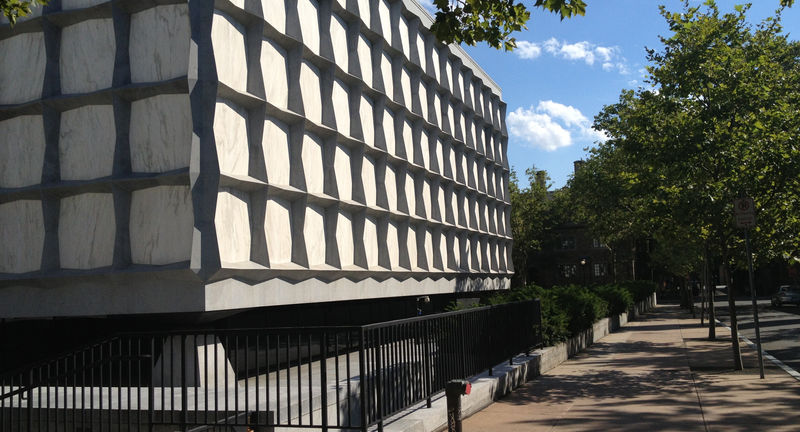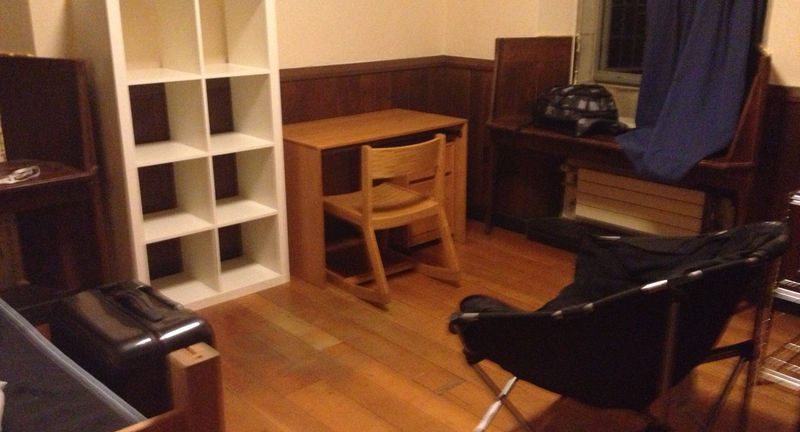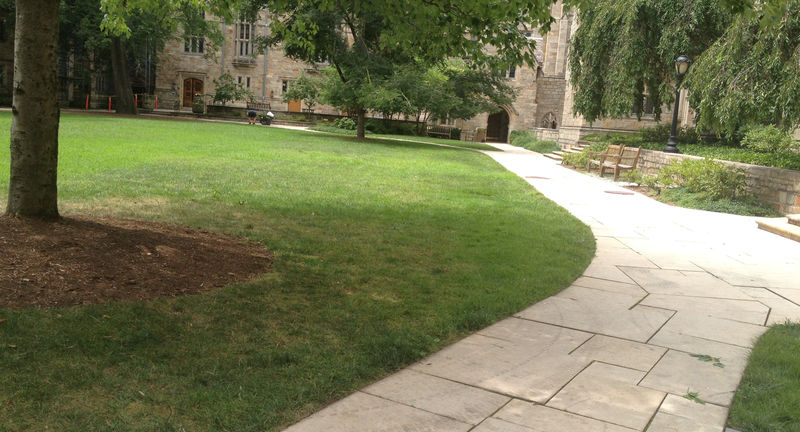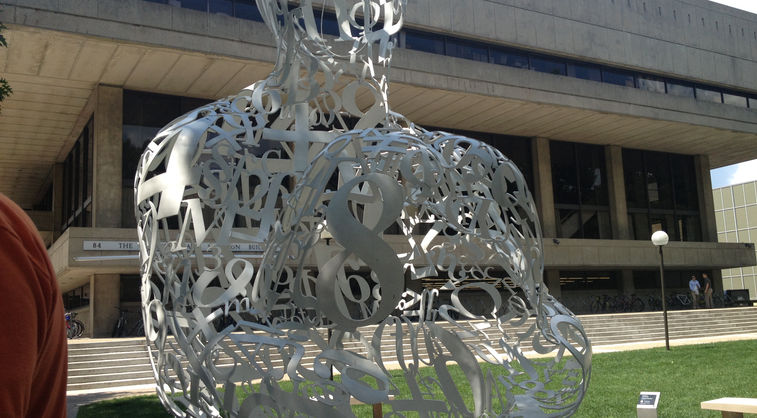International Experience
Yale University
Advanced English Program · Cultural and Academic Immersion
Where Language Became Leadership
Stepping onto the campus of Yale University, I expected to improve my English. What I encountered was something far more transformative: a living classroom of global perspectives, where communication was not just a skill, but a form of presence — a way to understand, to connect, and ultimately, to lead.
I was placed in the Advanced English track after a series of assessments, joining a cohort of students from France, Russia, Turkey, China, and Japan. What united us was not a shared native language, but a shared desire to be understood — and to understand one another. Our classroom became an ecosystem of accents, stories, and ideas. We moved between debate and storytelling, between structured lessons and spontaneous conversation, always learning — not just from the curriculum, but from each other.
In our classes, language was not taught mechanically. It was explored as a living tool — through philosophical questions, cultural exchanges, personal anecdotes, and humor. We didn’t just study vocabulary; we unpacked meaning. We reflected on how tone shifts intention, how silence can be louder than speech, how some words don’t quite translate and yet are felt all the same. We were not just improving our English. We were practicing diplomacy, empathy, and intellectual vulnerability — in real time, across borders.
What stood out most was the balance between academic rigor and cultural exchange. I remember one class in particular where we were asked to present a piece of our culture — not as a tourist would, but as a storyteller. I spoke about Brazil not through facts or photos, but through memory: the sound of the streets, the rhythm of our language, the warmth of our gatherings. My classmates listened with the kind of attention that transforms sharing into something sacred. In that moment, I saw how language can become a channel for identity — a way of holding space for one another’s truth.
Yale itself became a second teacher. Between classes, I explored the campus’s stunning architecture, where Gothic towers stood beside modern classrooms — a quiet metaphor for tradition meeting innovation. I studied in libraries that felt like sanctuaries of thought. I joined workshops in art and music, including one where I painted a canvas that still hangs in my room — a quiet reminder of how creativity and communication often go hand in hand. I played soccer on the lawns with students from every continent, where laughter, strategy, and sport became yet another shared language.
What began as an English program evolved into something else entirely: an exercise in global citizenship. I began to understand that fluency isn’t just measured by how you speak, but by how you listen, how you adapt, and how you build meaning across difference. I learned to read the room, not just the sentence. To speak with presence. To let go of perfection in favor of connection.
By the end of the program, I had not only become more articulate — I had become more attuned. I could navigate complexity without fear, communicate across cultures with grace, and express myself with both clarity and care.
That experience didn’t just help me find my voice in English — it helped me discover the deeper purpose of language itself: to build bridges, to share truth, and to lead from understanding.

Summer Exchange Challenges
Yale University
Where Independence Became Identity
Living alone in a dormitory at Yale, surrounded by unfamiliar faces and unfamiliar streets, I quickly discovered that immersion is not only academic — it’s personal. What began as a language program evolved into a formative chapter in independence, self-trust, and cross-cultural living. I wasn’t just learning to speak differently. I was learning to be different.
At first, even finding my way across campus felt daunting. The Gothic towers, endless lawns, and winding paths made orientation a challenge. I once got lost trying to find a classroom and, in searching for my destination, found something better — a connection. A group of international students helped me that day, and they became friends who would later shape the best moments of my experience. It was a simple encounter but a lasting lesson: asking for help isn’t a weakness — it’s how belonging begins.
Dining in Yale’s busy cafeterias brought its lessons. Navigating the social choreography of where to sit, what to say, and how to initiate a conversation in a second language — each meal became a new step in learning how to move through unfamiliar environments with courage. Eventually, I began preparing meals and taking those moments to speak more freely with students from different cultures. Small routines became daily victories. Language, I found, is as much about rhythm and presence as it is about grammar.
Beyond campus, I wandered through New Haven’s bookstores, cafés, and quiet side streets, learning not just how to ask questions in English but also how to listen with attention, observe without assumption, and appreciate the world from a place of curiosity rather than certainty.
Living alongside students from across the globe brought its complexities. We spoke different languages, carried different histories, and interpreted silence and humor radically differently. But within those tensions, something beautiful emerged — a shared willingness to meet one another halfway. In those unspoken negotiations, I began to understand what cultural intelligence truly means: patience, presence, and the willingness to stay curious even when comfort is lost.
The lessons I gained at Yale weren’t taught by professors. They came from missed turns, awkward first conversations, unfamiliar meals, and the decision to stay open — to difference, to discovery, to me. By the end of the program, I had become more fluent in English, more confident, more connected, and more confident in the quiet kind of leadership that comes from knowing you can stand on your own.

A Glimpse of Tomorrow
Journey to Innovation: A Tour of Harvard and MIT
Where Aspiration Became Direction
During my immersion at Yale, I had the opportunity to spend a weekend in Boston — a trip designed for cultural exploration but one that became profoundly personal. Something shifted as we toured the campuses of MIT and Harvard, two institutions I had long admired from a distance. They stopped being symbols. They became possibilities.
At MIT, the atmosphere buzzed with kinetic energy. Students lounged under trees discussing robotics and ethics; every hallway seemed to carry the hum of invention. We paused by the Alchemist sculpture, where I stood for a photograph but lingered for the meaning. There was a tension in the air — the kind that only exists in places where people are actively solving the problems the world hasn’t yet figured out. For the first time, I felt a quiet certainty: I could belong here. I could build here.
From there, we walked onto the grounds of Harvard, and while the energy was different, it was no less profound. Where MIT felt like motion, Harvard felt like gravity. The red brick walls, tree-lined paths, and centuries-old libraries held intellectual silence — a place that doesn’t raise its voice because it doesn’t have to. I remember walking through Harvard Yard with the weight of history under my feet and new clarity in my mind. It was not ambition I felt — it was alignment. I wasn’t dreaming of Harvard. I was calibrating toward it.
We continued our visit through Boston’s historic streets, browsed bookstores, and walked along the harbor — and yet my thoughts kept circling back to those two campuses. Not just to their prestige but to what they represented: spaces where questions are asked differently, ideas are tested more rigorously, and global challenges are treated not as abstractions but as responsibilities.
The next day, our group made a detour to Six Flags New England — a lighthearted, unexpected contrast. Visiting a real theme park felt surreal for someone who grew up playing Roller Coaster Tycoon. I rode my favorite coaster, Bizarro, again and again. It was fun, pure and simple — yet, in the joy and adrenaline, I realized something else: that even in moments of play, I was learning. About freedom. About joy. About the power of community forged through experience.
Together, these two days left a mark. MIT and Harvard had long been names in the distance—idealized, abstract, unreachable. But after walking their paths, talking to their students, and feeling the rhythm of their campuses, they became touchstones—not destinations but directions.
That trip gave me more than memories. It gave me the vision. It showed me what I wanted to work toward — academically, intellectually, ethically, and personally. It reminded me that excellence doesn’t have to intimidate. It can inspire. And it can invite.
Years later, I don’t remember every detail of the itinerary. But I remember what awakened in me: the conviction that I belong in places where ideas are bold, rigor is welcomed, and responsibility is shared. And the belief that one day, I won’t just visit institutions like MIT and Harvard.
I will contribute to them.















































